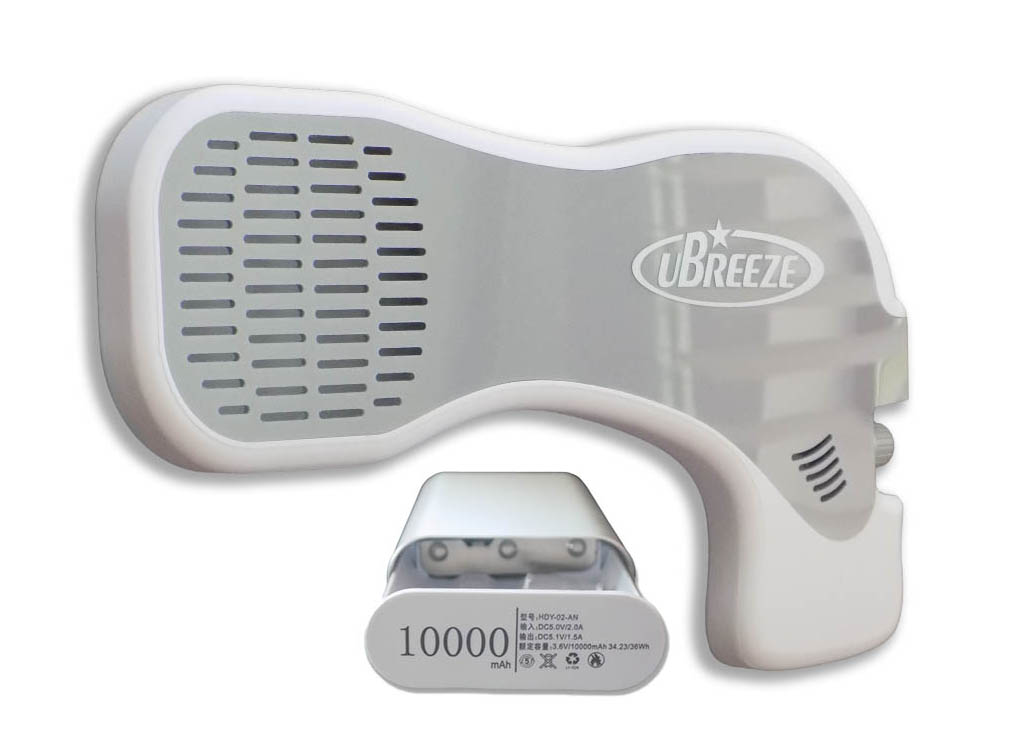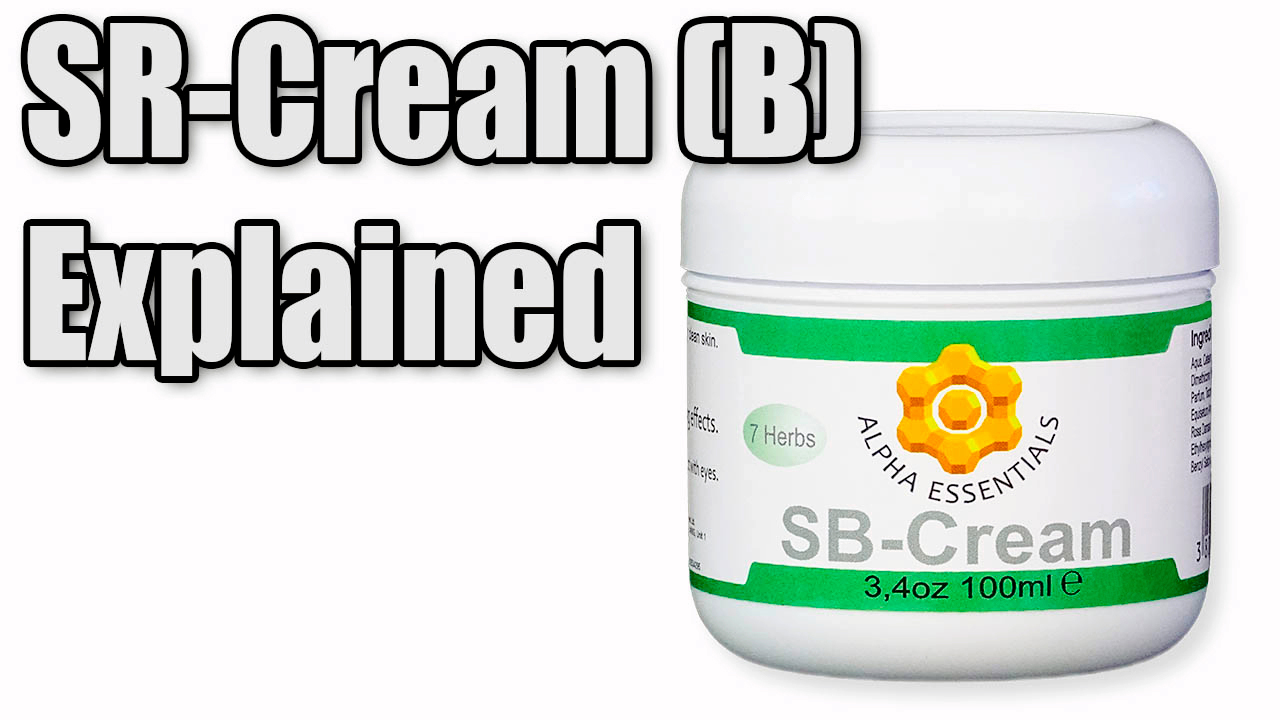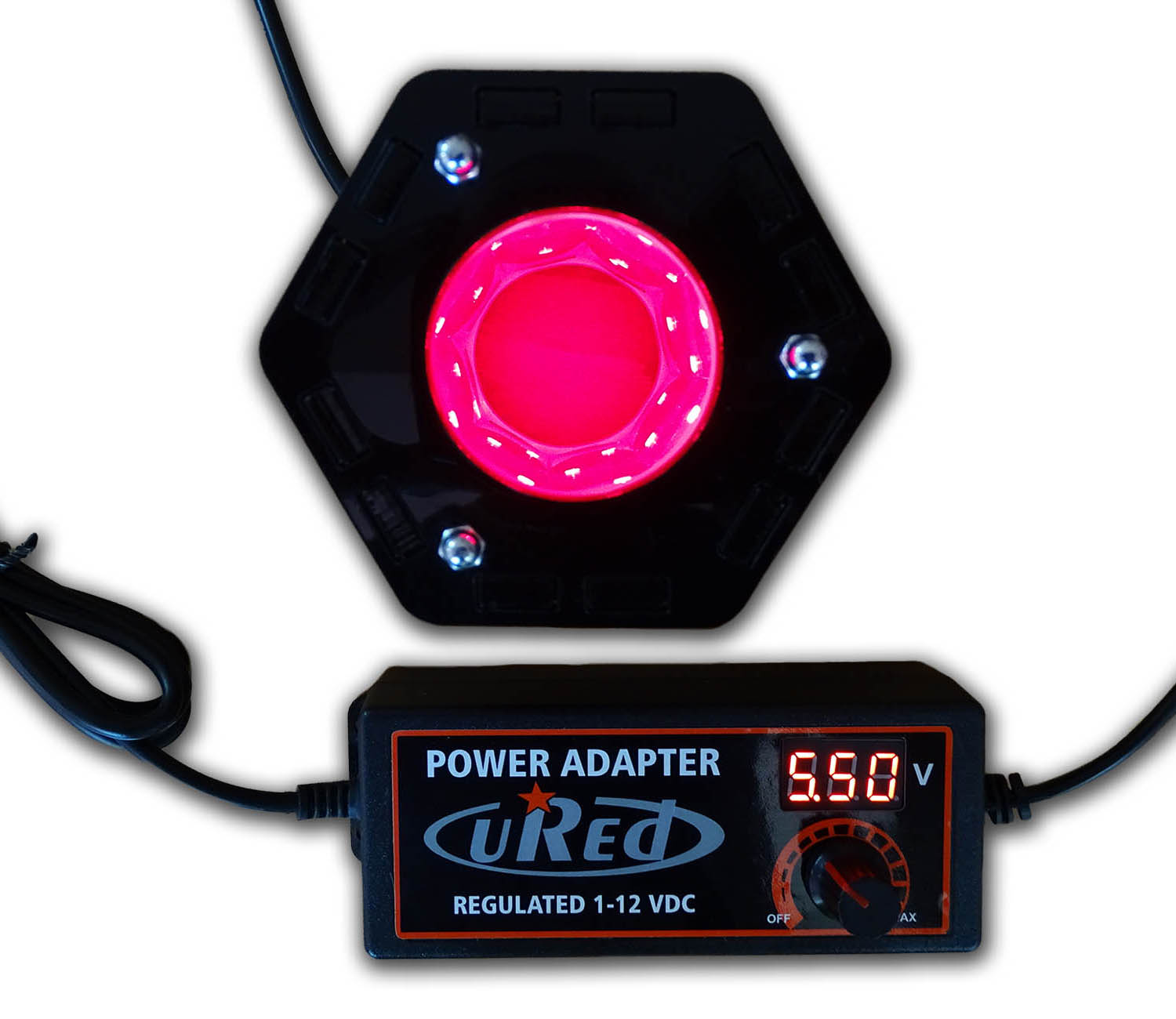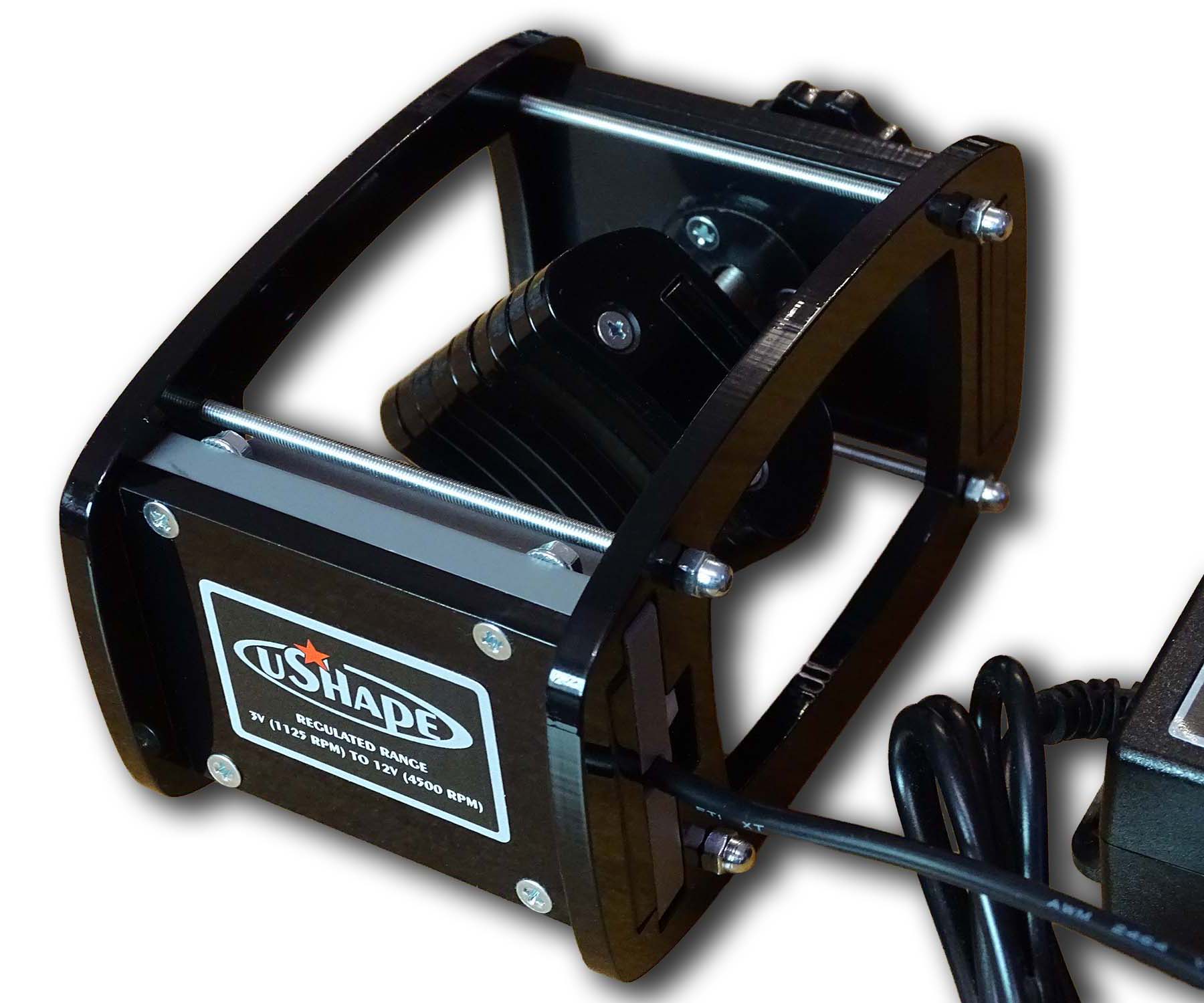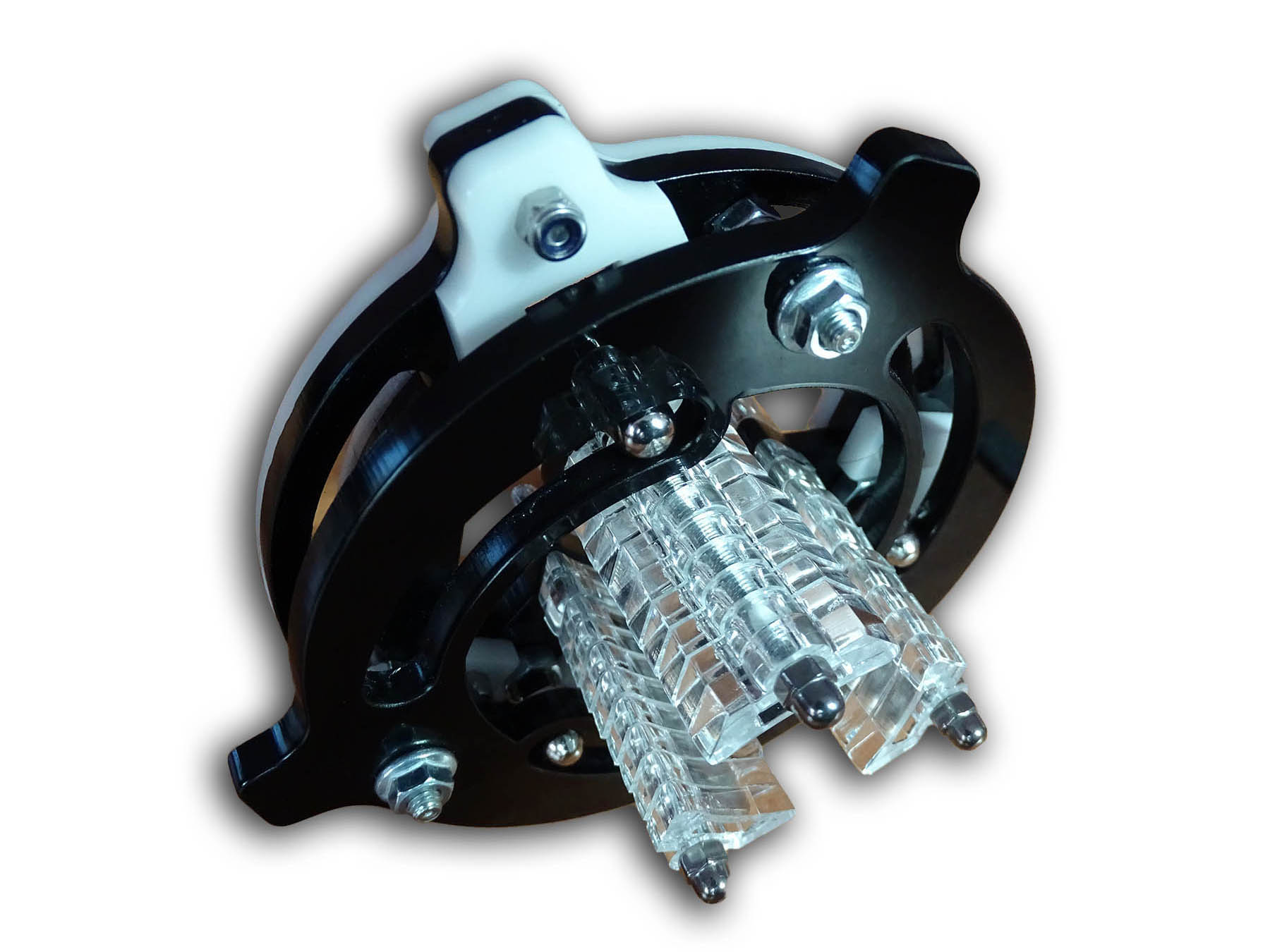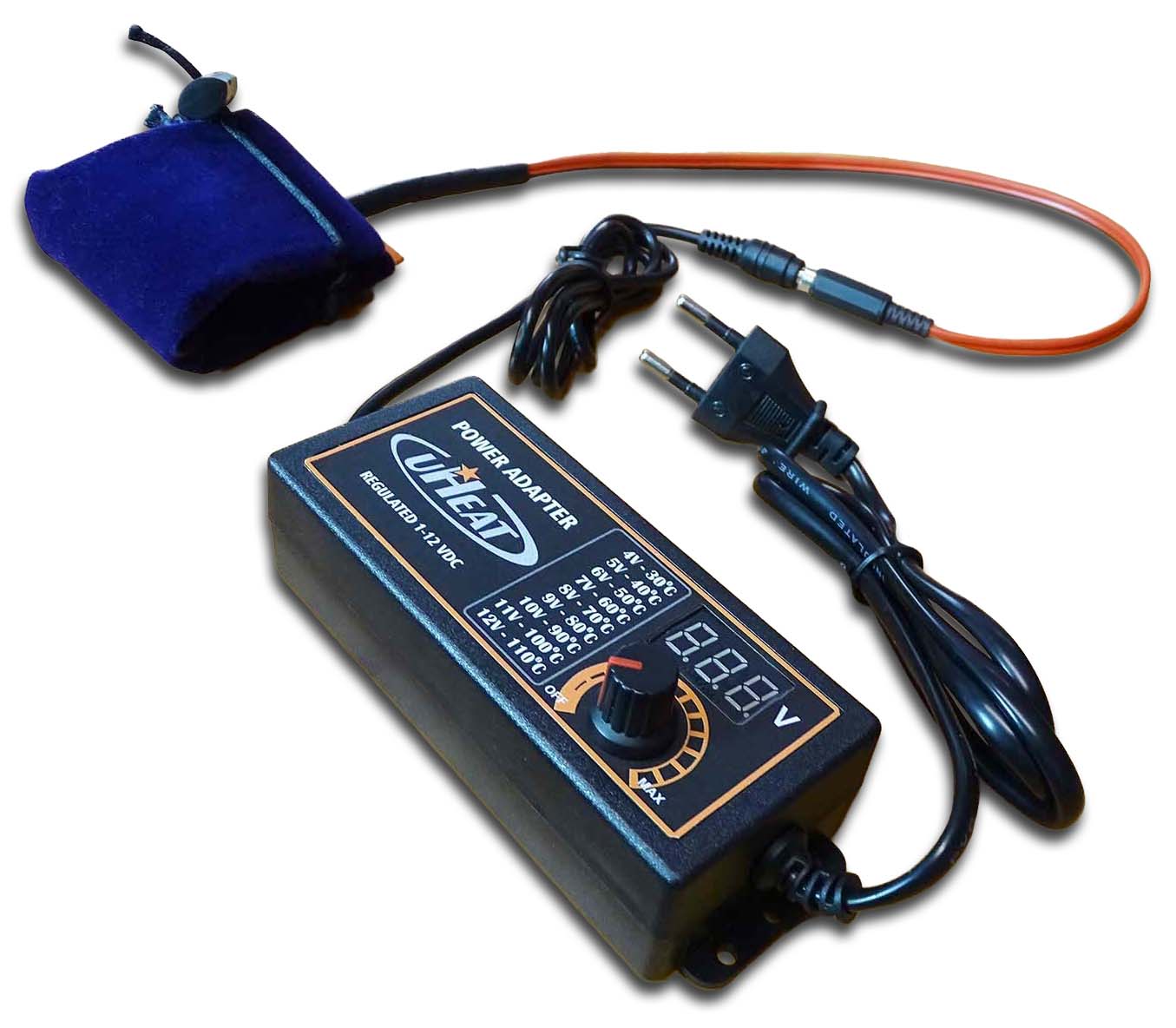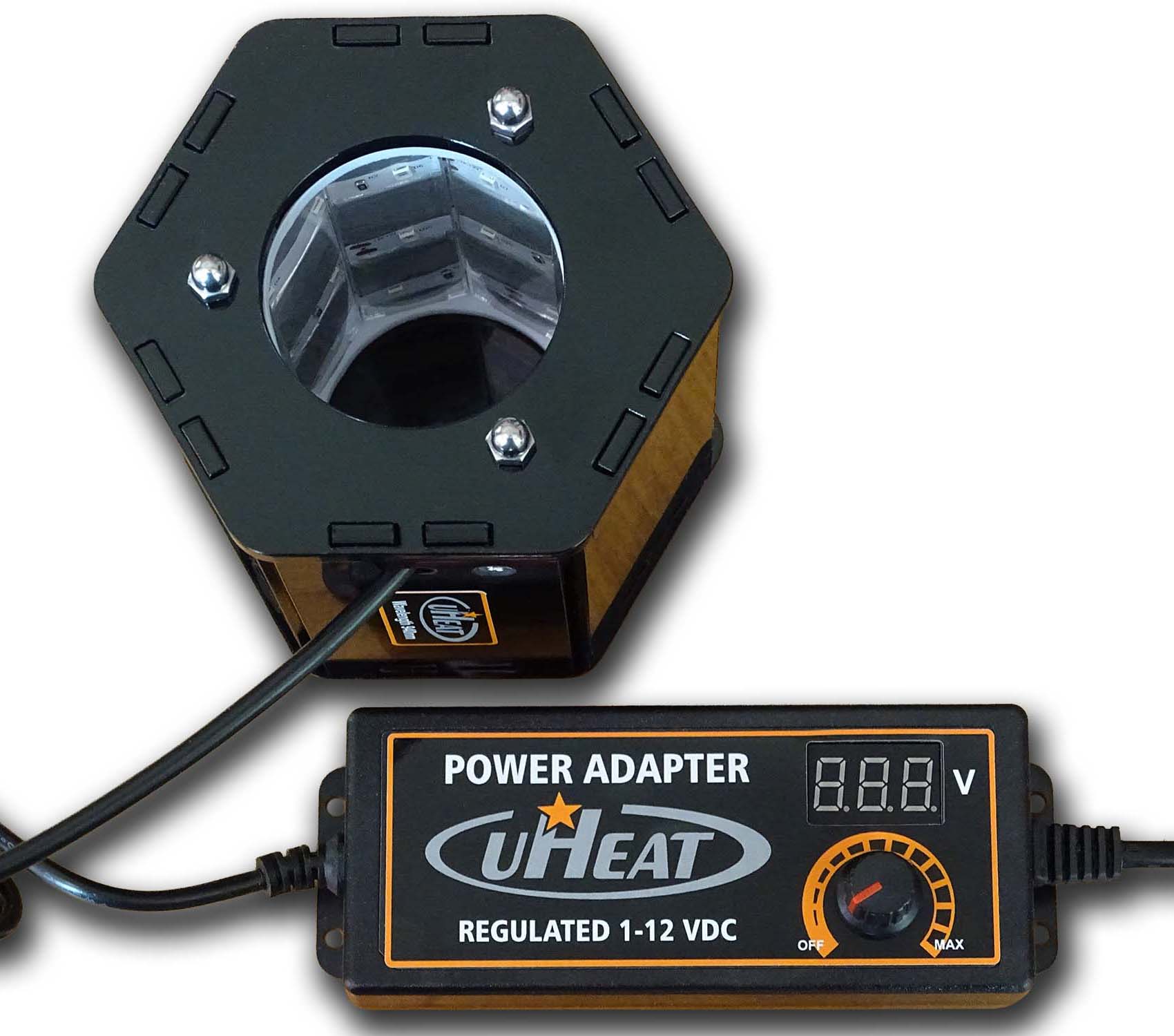This is the section for official studies and research related to the methods utilized by our products. We’ve categorized the information by method with direct links to the studies for your convenience. Titles and brief summaries have also been published. The section is updated on a regular basis as we’re always hard at work to keep up with relevant research and publish additional studies. We hope you’d find the presented information helpful.
[UPDATED ON: April 5th 2025]
DEEP RED LIGHT THERAPY | URED
Related official studies primarily focus on 660nm deep red light and its effect on modulating healthy collagen production, improving circulation, oxygen and nitric oxide availability, as well as its positive effects on scar dissolution and prevention. That’s usually in the form of having positive modulating effect on fibroplasts, which are cells closely involved with connective tissue and collagen scar tissue formations.
Study:Jaad.2019.10.089
Summary: A 2019 study found that treatment with red or infrared light using light-emitting diode (LED) devices augments tissue repair and promotes regeneration and skin rejuvenation. The results demonstrate that red and infrared light can significantly induce the expression of high quality elastic extracellular matrix proteins in human skin. Furthermore, synthesis of hyaluronic acid, collagen protein and elastin protein were also increased in human fibroblasts exposed to red or infrared light.
Study:PMC5699925
Summary: A 2017 study by shows that diode emitted deep red light increases vessel diameter and promotes circulation. Increasing blood flow through the blood vessels improves erectile capabilities, increases lymph flow, and brings oxygen and vital nutrients to the site. The vasodilating effect of red light therapy is expected to accelerate the healing process of wounds and other types of injuries.
Study:BIOMEDCENTRAL (Article #432)
Summary: During a 2019 study, researchers observed the positive effects of red light therapy on scar prevention. They discovered that the treatment modulates the processes involved in skin fibrosis and helps the body create healthy collagen tissue made of high quality cross-linked dermal fibers. Additionally, diode emitted led red light therapy was found to be safe and well tolerated even at higher fluences of 160 J/cm2 up to 480 J/cm2.
Study:PMC4126803
Summary: A 2014 study was carried out to assess the results of red light treatment on skin texture and appearance of individuals with aged skin. Following 12 LED treatments, profilometry quantification demonstrated that more than 90% of individuals had a reduction in rhytid depth and surface roughness. Moreover, 87% of the individuals reported that they have experienced a reduction in the Fitzpatrick wrinkling severity score. Additionally, low-power light therapy was observed to activate stem cells for increased tissue repair and healing.
Study:PMID24337350
Summary: A 2013 study followed 90 patients who had undergone sternum surgery, to determine the effects of red light therapy on pain and the healing process. Patients in the red light treatment group experienced reduced pain, less incision bleeding, fewer complications, and fewer ruptures of wounds. Together, these positives translate into faster wound closure and therefore less scarring.
Study:PMID29603108
Summary: A 2018 review examined several studies on red light and animal wound healing. Across these studies, the reviewers found that red light therapy increased wound contraction and tensile strength, which often results in less scarring. Shortened healing times could mean less opportunity for scars to continue developing.
Study:PMID25485805
Summary: A 2015 study found that diode-generated red light inhibits keloid fibroblast proliferation in a dose-dependent manner without altering viability. The study concludes that red light therapy could be a viable treatment for keloids and other fibrotic skin disorders.
Study:PMID25749659
Summary: A 2015 study on the effects of red light therapy on burn healing found that the best results and fastest tissue repair come from the fast application of red light to the burn. This was shown to be extra effective during the proliferative phase, which is when the skin is rebuilt at the wound site.
Study:PMID29704068
Summary: A 2018 study observed the effects of red light on animals with burns. Statistically significant differences were observed in the treatment group compared to the control group after 7 days of treatment. The treatment group showed significant anti-inflammatory effects as well as migration and proliferation of fibroblasts just seven days after treatment, leading to accelerated healing. These results showed that deep red light phototherapy performs positive influence in full-thickness burns repair from the healing process modulated by cellular immune response.
Study:PMID15145195
Summary: A 2004 study involved 19 patients with burn scars. After treatment with 670 nm red light twice a week for eight weeks photographical and clinical assessments were recorded in all the patients. The treatment group exhibited an improvement in 17 out of the 19 scars. No negative effects were reported. A correlation between scar duration and improvement through red light therapy could be found.
Study:PMID33788987
Summary: A 2021 study used red light for reduction of post-surgical scarring. Treated scars showed greater improvements in observer rating and scar pliability, reflected by greater reductions in induration compared to control scars. The study concludes that led red light phototherapy is safe in the early postoperative period and may reduce scarring.
Study:PMID27182462
Summary: A 2016 study concluded that there is a growing body of evidence demonstrating that visible LED light, especially in the red spectrum, is capable of positively modulating key cellular characteristic associated with skin fibrosis.
Study:PMID31307501
Summary: A 2019 study states that led red light therapy is a therapeutic modality of increasing importance and has the potential to clinically limit skin fibrosis by decreasing dermal fibroblast activity and collagen production. The administration of led red light phototherapy in the early postoperative period is expected to optimize wound healing and prevent excessive scarring. The results from this study has the potential to positive influence the current treatment paradigm for fibrotic skin diseases and help pioneer led red light therapy as a safe, non-invasive, cost-effective, and portable therapy for scars.
Study:PMID33556618
Summary: A 2021 study shows that led red light therapy helps modulate cell hyperproliferation (an abnormally high rate of proliferation of cells by rapid division) as well as collagen scar synthesis and accumulation by regulating the autophagy-apoptosis signalling pathway. The study concludes that red light therapy deserves systematic investigation as a potential therapeutic strategy for collagen scars.
HEAT THERAPY (HYPERTHERMIA) | FAR INFRARED 940NM HEAT THERAPY
Related official studies primarily focus on heat therapy’s (hyperthermia) effect on modulating healthy collagen production, improving circulation, lowering pain, as well as its positive effects on scar dissolution and prevention. Additionally, Far Infrared Therapy (FIT) adds positive effects explored under the uHeat V2 section.
HEAT THERAPY | UHEAT V1 & UHEAT V2
UHeat V1 focuses on heat therapy (hyperthermia) exclusively and utilizes heat pads to achieve the desired effect. UHeat V2 focuses on heat therapy primarily and utilizes far infrared rays to achieve the desired effect. Related official studies observe heat therapy’s positive effects on blood flow, pain relief, and tissue health & elasticity by means of softening & reducing lower quality collagen scar tissue formations.
Study:PMID16019862
Summary: A 2005 study found that hyperthermia significantly reduced plaque size and penile curvature (Peyronie’s) and led to an increase in mean scores of erectile function (EF) domain. Hyperthermia was found to be safe and significantly very effective in preventing disease progression. Results of this study stress the efficacy of hyperthermia in the treatment of advanced Peyronie’s disease.
Study:PMID25526231
Summary: A 2015 research study in related literature found that the physiological effects of heat therapy include pain relief and increases in blood flow, metabolism, and elasticity of connective tissues. It was shown that heat-wrap therapy provides short-term reductions in pain and disability in patients with acute low back pain and provides significantly greater pain relief than does cold therapy.
Study:IPS (Article #2021)
Summary: Doctors from ANTIGO and MOSINEE clinics confirm that heat helps to soften up the scar tissue that exists as a result of an old injury or a previous surgery. Scar tissue is formed in random, low quality criss-crossing patterns, has poor circulation, and contracts when you sleep. Heat brings new blood flow to an area and with it fresh oxygen and other nutrients. Heat can also help to soften up trigger points and reduce stress.
Study:PMID30118148
Summary: A 2018 study found that repeated exposure to passive heat stress (‘heat therapy’) has widespread physiological benefits, including cellular protection against novel stressors. It was found to prevent oxidative and inflammatory stress associated with hypoxia-reoxygenation of cells and to improve resistance against further such events. Additionally, the researchers conclude that heat therapy could be a promising intervention for reducing cellular damage following ischaemic events.
Study:PMID27270841
Summary: Results from a 2016 study show that passive heat therapy improves endothelial function, arterial stiffness and blood pressure in sedentary humans. Heat therapy improved endothelium-dependent dilatation, arterial stiffness, intima media thickness and blood pressure, indicating improved cardiovascular health. These data suggest heat therapy may provide a simple and effective tool for improving cardiovascular health in various populations.
FAR INFRARED RAY (FIR) 940NM HEAT THERAPY | UHEAT V2
UHeat V2 uses far infrared therapy as a method in order to better penetrate & heat the tissues from the inside. It is considered more advanced than just applying heat on the outside with heating pads utilized by uHeat V1. In addition to the positive heat therapy effects, Far Infrared Therapy (FIT) adds its own set of benefits explored bellow.
Study:PMID25716016
Summary: The purpose of this 2015 study was to review and summarize the results of previous investigations and to elaborate on the molecular mechanisms of FIR therapy in various types of disease. The conclusion is that FIR therapy may be closely related to the increased expression of endothelial nitric oxide synthase as well as nitric oxide production and may modulate the profiles of some circulating miRNAs. Thus, it may be a beneficial complement to treatments for some chronic diseases that yields no adverse effects.
Study:PMID32367734
Summary: A 2020 study dealing with FIR effects on blood circulation observed significant positive effects of FIR therapy on temperature, pulse, and blood flow of the dorsalis pedis artery. Sensitivity to pain, tactility, and pressure also improved significantly in the experimental group. The Edinburgh Claudication Questionnaire revealed that the experimental group had reductions in subjective experiences of soreness, tingling, and coldness. The findings of significant improvements to objective and subjective measures of blood flow and neural function in the experimental group indicate that FIR therapy improves blood circulation.
Study:PMID30229411
Summary: A 2019 study found that the application of FIR therapy for 40 min, three times weekly for 6 months, has improved the peripheral artery disease (PAD) of both lower extremities, thus providing a new strategy of PAD treatment in hemodialysis patients.
Study:PMID34944737
Summary: A 2021 study found that FIR treatment significantly reduced the wound area and healing time. Additionally, optimal dosage of FIR also significantly suppressed pro-inflammatory response and increased neovascularization and tissue regeneration. Histological findings of peri-wounding tissue revealed a significant increase in the neo-vessels in the FIR-treated groups as compared to the controls.
Study:PMID32338211
Summary: A 2021 study identified molecular mechanisms by which FIT patches, as a far infrared technology, protects against damage caused by inflammatory process and oxidative stress. The conclusion of the study is that far infrared technology, through various protective mechanisms, could be used to lower inflammation, oxidative stress and degenerative states.
Study:PMID25722734
Summary: This 2015 study investigated the effects of postoperative low-power far-infrared (FIR) radiation therapy on nerve repair in rats. Compared with the sham group, the FIR group exhibited a significant reduction in muscle atrophy. Furthermore, histomorphometric assessment indicated that the nerves regenerated more rapidly in the FIR group than in the sham group. The FIR group regenerated neural tissue over a larger area, as well as nerve fibers of greater diameter and with thicker myelin sheaths. Functional recovery, inflammatory response, muscular reinnervation, and histomorphometric assessment all indicated that FIR radiation therapy can accelerate nerve repair following end-to-end neurorrhaphy of the sciatic nerve.
Study:PMID28961078
Summary: This 2018 study found that far infrared thermotherapy provides an effective treatment for tissue fibrosis; it reduces the concentration of fibrosis cytokines in affected tissues. Consequently, this treatment can reduce the density of fibrous tissue in the affected extremities, increase skin elasticity, significantly improve clinical symptoms, and improve quality of life of patients.
Study:PMID16606412
Summary: A 2006 study aimed to prove that far infrared therapy, in addition to its positive thermal effect, also positively affects the skin by means of increased microcirculation. Sixty rats were used for the study, with a FIR emitter placed above them. Results showed that skin blood flow increased significantly soon after the removal of the FIR emitter. These findings suggest a positive non-thermic biological effect of FIR on skin microcirculation. In conclusion, FIR therapy exerts a positive Nitric Oxide related biological effect to increase skin microcirculation. This might bring into perspective the clinical application of FIR to treat diseases by augmenting L-arginine & Nitric Oxide pathway.
Study:PMID26703225
Summary: A 2015 study analysis on the application of far infrared therapy in the treatment of wound healing concluded that FIR could enhance would healing processes in rat models and has been successfully used for its soothing effects. The exact degree of efficacy is suggested to be explored further by additional research.
Study:PMID35572409
Summary: A 2021 study found that FIR suppresses experimental arthritis in rats by down-regulation of genes involved in inflammatory response and autoimmunity. Results showed that thirty minutes of FIR treatment significantly improved the symptoms of adjuvant-induced arthritis in rats. Researchers concluded that FIR provides those beneficial effects by modulation of the various autoimmune signaling pathways. Therefore, FIR could provide an alternative non-pharmacological and non-surgical therapeutic approach for the treatment of rheumatoid arthritis.
Study:PMID25526231
Summary: In a 2016 study, researchers investigated whether far infrared therapy could ameliorate burn wound progression and promote wound healing. In a rat burn model, FIR ameliorated burn-induced epidermal thickening, inflammatory cell infiltration, and loss of distinct collagen fibers. Moreover, FIR enhanced autophagy and suppressed the activity of the NLRP3 inflammasome in the rat skin tissue of the burn model. Based on these results, we suggest that FIR-regulated autophagy and inflammasomes will be important for the discovery of novel therapeutics to promote the healing of burn wounds.
Study:PMID33819214
Summary: A 2021 compared the effect of low-dose continuous ultrasound and far-infrared interventions for reducing pain in patients with mechanical neck pain. Far-Infrared was found to be much better than low-dose continuous ultrasound for reducing pain in patients suffering from mechanical neck pain.
MAGNETIC THERAPY | UHEAL V2
UHEAL V2 is a magnetic therapy device that utilizes 3 specially designed and tuned therapeutic magnets to create just the right field for highly improved tissue restoration and rejuvenation. Relevant studies below deal with the beneficial healing effects of static magnetic fields.
Study:Kopelman L. Magnets & Medicine. Pract Pain Manag. 2001-1(5)
Summary: A 2011 study on the healing effects of magnetic forces found increasing evidence that magnetic therapy is effective and concluded that both static and pulsed magnetic field therapy assist the body to naturally heal itself and reach an optimum level of health.
Study:PMC6935725
Summary: A 2011 study aimed to compare morphological and histological differences between magnetic field (although pulsed) and electric stimulation therapies in an experimental burn injury model in rats. Earlier re-epithelialization, wound area contraction, reduction of edema, and hyperaemia were observed in the therapy groups compared to the control group.
Study:PMC2490801
Summary: The purpose of this 2008 study was to evaluate the effect of static magnetic fields on cutaneous wound healing in an animal model. Wounds in the magnet group healed in an average of 15.3 days, significantly faster than those in either the sham group (20.9 days) or control group (20.3 days). Conclusions were that externally applied, low-power, static magnetic field increases the rate of secondary healing. Additionally, review of the literature reveals evidence regarding the use of magnetic energy to aid the healing of bone, tendon, and skin (though additional conclusive studies are recommended).
Study:PMID15992236
Summary: The aim of this 2005 review was to establish whether there is evidence for or against the efficacy of static magnets for pain relief. A systematic literature review was undertaken of studies that compared the use of static magnets with an appropriate control for the treatment of pain. Study methods, their quality, and outcome were also reviewed. Overall more studies reported a significant positive analgesic effect due to static magnets. The weight of evidence from published, well-conducted controlled trials suggests that static magnetic fields are able to induce analgesia.
Study:PMID29652610
Summary: A 2016 study focused on a therapy comprising a Static Magnetic Field (SMF) with contractility to improve wounds. To examine the effect of the magnetic band (MB) on wound healing, wounds were surgically created on the dorsum of rats. An elastic and contractile band (nontreatment), or one neodymium magnet (Nd-1) or two magnets with an elastic and contractile band (Nd-2) were topically applied to the wound daily and the wound size was measured from day 1 to 7 after surgery. Nd-2 showed a significant (95%) reduction in the wound size on day 3. Histological analysis showed that proinflammatory cytokine levels were diminished by Nd-2, and granulation tissue and microvessels were increased compared with those in the sham group. During the magnetic band-induced wound healing, apoptosis was significantly reduced and matrix remodeling-related factors were initially regulated. The results suggest that combination therapy comprising a Static Magnetic Field (SMF) and an elastic and contractile band could be a promising tool to heal cutaneous wounds rapidly.
Study:PMID9697544
Summary: A 1998 study involved a 51 year old paraplegic woman with an abdominal wound that had been present for one year. Traditional approaches to wound care had not achieved complete healing. Prior to surgical intervention, the patient consented to the application of magnet therapy over her usual wound dressing. In one month, the wound completely healed.
Study:PMID12736891
Summary: A 2003 study tried to determine if static magnetic field therapy would be an effective treatment option for forms of neuropathy. Three hundred seventy-five subjects with Diabetic Peripheral Neuropathy (DPN) stage II or III were randomly assigned to wear constantly magnetized insoles for 4 months; the placebo group wore similar, unmagnetized devices. There were statistically significant reductions during the third and fourth months in burning (mean change for magnet treatment, -12%; for sham, -3%; P<.05, ANCOVA), numbness and tingling (magnet, -10%; sham, +1%; P<.05, ANCOVA), and exercise-induced foot pain (magnet, -12%; sham, -4%; P<.05, ANCOVA). For a subset of patients with baseline severe pain, statistically significant reductions occurred from baseline through the fourth month in numbness and tingling (magnet, -32%; sham, -14%; P<.01, ANOVA) and foot pain (magnet, -41%; sham, -21%; P<.01, ANOVA).
Study:PMID12501067
Summary: The aim of the 2002 study was to determine the efficacy of static magnetic field therapy for the treatment of chronic pelvic pain (CPP) by measuring changes in pain relief and disability. Patients receiving active magnets who completed 4 weeks of double-blind treatment (though some patients were later identified as likely to correctly identify their treatment) had significantly lower Pain Disability Index (P <.05), Clinical Global Impressions-Severity (P <.05), and Clinical Global Impressions-Improvement (P <.01) scores than those receiving placebo magnets. The conclusion of the study was that static magnetic field therapy significantly improves disability and may reduce pain when active magnets are worn continuously for 4 weeks.
Study:PMID23377145
Summary: A 2013 study focused on the postoperative magnet application for the treatment of earlobe keloids. Ear keloids are firm, rubbery, fibrous nodules that form on the ear after minor trauma, most commonly after ear piercing (similar to any collagen scar tissue formation). This observational case-control study compared a retrospective cohort of patients whose keloids were dressed using conventional methods with a matched prospective cohort of patients whose keloids were dressed using magnets combined with hydrocolloid materials. Overall, 9 (11.2%) of the 80 study patients experienced recurrence. The recurrence rate was significantly lower in the matched case group (2 of 40, 5%) than in the matched control group (7 of 40, 17.5%) during the follow-up period of 18 months. The authors’ novel dressing of magnets and hydrocolloid materials appears to be effective in reducing earlobe keloid recurrence.
PHYSIOTHERAPY | USHAPE
UShape applies long-lasting adjustable pressure and vibrations on points of interest. Most of the relevant studies in this section deal with the positive effects of physical stimulation on scar tissue(s).
Study:PMID24630820
Summary: A 2014 study evaluated the effect of massage therapy on collagen scar tissues. One hundred and forty-six patients with hypertrophic burn scars were randomly divided into an experimental massage group and a control group. After treatment the massage group showed a significant decrease in scar thickness, melanin, erythema, transepidermal water loss, and a significant intergroup difference. In terms of scar elasticity, the massage group showed significant improvement in skin distensibility, immediate distension, immediate retraction, and delayed distension. The results suggest that massage therapy is effective in improving pain, pruritus, and scar characteristics in hypertrophic scars.
Study:SCIENCEDIRECT (Article #S0894113022000059)
Summary: To goal of this 2022 study was to collate the empirical literature on scar massage for the treatment of postsurgical cutaneous scars. Twenty-five studies met the inclusion criteria, reporting on a combined sample of 1515 participants. The overall findings suggest that there are benefits to scar massage in reducing pain, increasing tissue elasticity, and improving scar characteristics. This scoping review supports the need for further research to substantiate its use in clinical setting.
Study:WILEY-ONLINELIBRARY (Article #SRT.13272)
Summary: A 2023 study aimed to was to evaluate effectiveness of the scar manual therapy combined with complementary methods on the postoperative scars. Treatment protocol included two therapies during 30 min per week for 8 weeks. Therapy included manual scar manipulation, massage, cupping, dry needling, and taping. Treatment had a significant positive effect to influence pain, pigmentation, pliability, pruritus, surface area, and scar stiffness. Improvement of skin parameters (scar elasticity, thickness, regularity, color) was also noticed.
Study:PHYSIO (Article #2022)
Summary: A 2022 article from Physio Clinics goes over the various massage methods they utilize to break down scar tissue. While there are various methods and approaches depending on different factors, such as individual scar tissue type and location, their practice shows that scar tissue can be successfully, safely, and systematically broken down when the right approach is utilized.
Study:JOURNALS.SAGEPUB (Article #10.1177/175899830200700101)
Summary: A 2002 study investigated the effect of scar massage on active range of motion and skin mobility, in conditions involving a linear scar at the wrist. Twenty-two subjects underwent a treatment programme inclusive or not inclusive of scar massage. Wrist motion and skin mobility were evaluated over a four week observation period. Results indicated that the inclusion of scar massage accelerated recovery of wrist motion over a four week period while having no notable effect on skin mobility. These preliminary results support the use of massage within a therapeutic programme to address deficits in range associated with scarring in the vicinity of hand joints.
7HERBS | SR-CREAM (B)
As the subject is exceedingly expansive, we’ve done our best to summarize the positive effects of the cream’s individual ingredients both on its presentation page and in a separate video.
UBREEZE
The very first resource section was created specifically for it and is still available (here). Studies and relevant articles deal with the positive effect of low temperature on testicular functioning for improved sperm quality and testosterone production.

